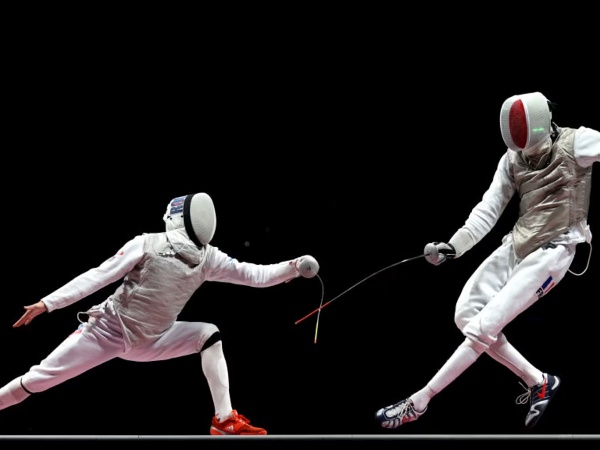views : 733
3 Min Read
All About Fencing At The 2024 Olympic Games
Fencing traces its origins back to ancient swordplay, a discipline honed over millennia as evidenced by carvings of fencers dating to around 1190 BCE discovered near Luxor, Egypt. In the 14th and 15th centuries, fencing underwent a significant evolution under the guidance of Italian, German, and French masters. What had once been primarily a military training exercise gradually transformed into a competitive sport. Today, fencing is a global phenomenon, passionately pursued across continents. The International Fencing Federation, boasting 157 national federation members, underscores its widespread popularity and competitive spirit.
From Europe to Asia, Oceania to the Americas, and throughout Africa, fencing garners enthusiastic participation and fierce rivalries. This widespread appeal has solidified its place not just as a sport but as a cultural and competitive endeavor enjoyed worldwide. As fencing continues to evolve, it remains rooted in its rich history of swordplay, combining tradition with innovation in each thrust and parry on the modern fencing strip. Fencing is a dynamic sport where two competitors, armed with a single-handed weapon each, face off to strike valid target areas on their opponent's body. The rules vary based on the type of weapon used, with three main categories: foil, epee, and sabre.
In sabre, points can be scored with the tip, edge, or back of the blade, targeting the entire torso above the waist, head, and arms. Epee and foil, however, only award points when the fencer touches their opponent with the tip of their weapon. In épée, the valid target spans from the mask down to the feet, encompassing the entire body. Foil restricts the target area to the trunk, including the torso, shoulders, and neck. Matches in individual fencing are decided by the first fencer to reach 15 points or the fencer with the most points after three three-minute rounds. Team fencing alters this format, with teams aiming to accumulate 45 points first or leading when time expires to secure victory.
Fencing has held a prestigious place in the Olympics since its inclusion in the inaugural modern Games in Athens in 1896. Women’s fencing joined the Olympic programme in 1924 in Paris, initially featuring only the foil event. The expansion of women’s participation grew significantly later on: épée was introduced in Atlanta 1996, and sabre followed in Athens 2004, completing the trio of women's fencing disciplines. Men and women now compete in both individual and team events, reflecting the sport's evolution and inclusivity within the Olympic movement. One of the sport's iconic figures, Italy’s Nedo Nadi, stands out in Olympic history. In 1912, at just 18 years old, he clinched gold in the foil event. His career was not only marked by athletic achievements but also by remarkable valor: decorated for bravery during World War I, Nadi achieved an unprecedented feat in Antwerp 1920. There, he secured an unparalleled five gold medals across individual and team events in foil and sabre disciplines.
Nadi's triumphs in Antwerp solidified his legacy as the only fencer to claim gold in every weapon category at a single Olympic Games. His achievements underscore the blend of skill, determination, and historical significance that fencing embodies within the realm of Olympic sports. Today, fencing continues to captivate audiences with its blend of strategy, athleticism, and the rich narrative of its champions.
